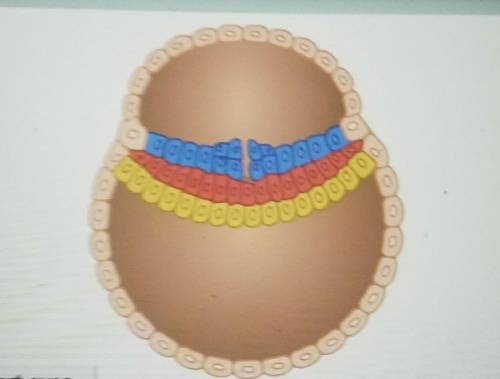
Biology, 20.11.2020 07:40, michaelgold1
Each of the three cell layers (blue/skin red/bones and yellow/organs) became different parts of the adult organism. What does that mean about the cells that were once identical?


Answers: 3
Other questions on the subject: Biology

Biology, 21.06.2019 22:00, acostasilvana1osw8tk
The earth consists of a variety of different organisms. despite their diversity, however, some similarities on the structural and metabolic levels may be seen. these similarities can be attributed to a. similarities among organisms in their proteins and nucleic acids. b. the ability of organisms to readily adapt to sudden environmental changes. c. similarities in organisms' habitats and niches. d. the ability of all organisms to interbreed and produce new species.
Answers: 1


Biology, 22.06.2019 16:30, moneykey
Urgent in guinea pigs, black fur (b) is dominant over white fur (b). cross a heterozygous (hybrid) black guinea pig with a homozygous (purebred) white guinea pig. complete a punnett square, identify the genotype(s), phenotype(s), and probability (% and fraction) that the offspring will be black and white?
Answers: 1

Biology, 22.06.2019 18:20, ericsmith19
Anybody know this. a haplontic cycle animal initially reproduces by: mitosis binary fission isogamous fertilization meiosis
Answers: 2
Do you know the correct answer?
Each of the three cell layers (blue/skin red/bones and yellow/organs) became different parts of the...
Questions in other subjects:

Chemistry, 04.08.2019 04:00

History, 04.08.2019 04:00

Mathematics, 04.08.2019 04:00

Mathematics, 04.08.2019 04:00



Mathematics, 04.08.2019 04:00

History, 04.08.2019 04:00

Health, 04.08.2019 04:00







